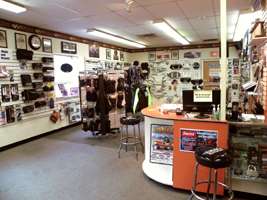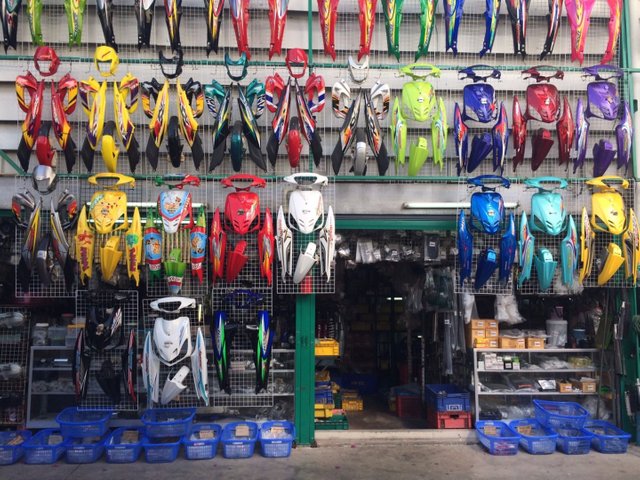Check Out Our Motorcycle Shop for Expert Recommendations and Quality Products
Check Out Our Motorcycle Shop for Expert Recommendations and Quality Products
Blog Article
Understanding the Vital Parts of a Motorcycle: A Comprehensive Overview for Enthusiasts
For bike enthusiasts wanting to raise their riding experience and guarantee their bikes run efficiently, understanding the necessary components of a motorbike is paramount. Each aspect, from the engine's intricate workings to the crucial role of the stopping devices, not only impacts performance however also security and comfort. This guide will stroll through the fundamental parts that every rider should recognize with, enabling notified selections in both upkeep and prospective upgrades. As we begin this exploration, one must ask: just how does each element connect to produce the smooth trip every enthusiast looks for?
Engine Parts

The camshaft plays a critical role in managing the timing of the engine's shutoffs, ensuring the accurate opening and closing essential for efficient gas and air consumption, in addition to exhaust expulsion. This timing is critical to maintaining optimal engine performance and efficiency. In addition, the carburetor or gas shot system, depending on the motorcycle model, is accountable for blending air with gas in the correct ratio for burning.
The cooling system, either air or liquid-based, functions to preserve the engine's temperature within operational limitations, protecting against overheating and ensuring long life - motorbike shop. Each component, meticulously designed and integrated, adds to the smooth procedure of the engine, specifying the motorbike's power outcome and total performance
Transmission System
Essential to the bike's capability, the transmission system makes sure effective power transfer from the engine to the wheels. This system comprises a number of important elements, consisting of the clutch, transmission, and final drive, each playing a vital role in translating the engine's power right into activity. The clutch, normally operated by a hand lever, offers to engage and disengage the engine from the transmission, permitting for smooth equipment changes and regulated acceleration.
The transmission, usually described as the transmission appropriate, consists of a collection of gears that bikers can by hand change with to change the bike's rate and torque outcome. These equipments are arranged in a sequence that enables the bike to accelerate smoothly and keep optimal engine efficiency across numerous rates. The majority of bikes use a consecutive transmission, calling for the biker to shift equipments in a fixed order.
Braking Devices
While comprehending the transmission system is crucial to taking advantage of a bike's power, similarly essential is the ability to control and quit that power successfully, which is where braking mechanisms enter into play. Brakes are crucial for safety and security and efficiency, giving the biker with the required control to navigate numerous surfaces and conditions. Generally, bikes include 2 sorts of braking systems: disc brakes and drum brakes.
Disc brakes are extra prevalent in contemporary motorcycles due to their superior efficiency. This system offers far better warmth dissipation, constant efficiency, and improved quiting power, particularly in wet conditions.
Conversely, drum brakes, though less typical, are still located in some motorbikes. They work by pushing brake footwear versus the internal surface of a drum connected to the wheel. While usually much less efficient in warm dissipation and quiting power, drum brakes are simpler and much more cost-efficient.
Comprehending these best motorcycle helmet stopping systems' nuances allows riders to maintain their bikes appropriately and value the engineering that makes certain safe and efficient quiting.
Suspension and Steering
Suspension and guiding systems are essential parts that dramatically influence a motorbike's handling and adventure convenience. The shock absorber, containing forks at the front and shock absorbers at the back, takes in road irregularities, boosting security and control. Front forks, usually telescopic have a peek at these guys or inverted, compress and rebound to mitigate impacts, while back shock absorbers preserve tire call with the roadway, critical for grip and safety.
Guiding, centered around the handlebars, connects the motorcyclist to the motorcycle's directional control. The guiding head bearings make certain smooth operation, allowing exact maneuverability. Correct positioning and maintenance of these bearings are crucial for predictable guiding reaction and reducing biker fatigue.
The suspension's adjustability is one more essential aspect; preload, damping, and rebound settings permit modification to fit various riding conditions and designs. This versatility is important for maximizing efficiency, whether navigating city streets or dealing with sturdy routes. Developments like digital shock absorber provide real-time modifications, enhancing experience top quality across diverse surfaces.

Electric Solutions
After making certain a regulated and smooth trip with reliable suspension and guiding systems, focus transforms to the electrical systems, an essential facet of modern-day motorbikes. These systems play an important function not just in beginning the engine but likewise in powering numerous parts that enhance the functionality and security of the bike.
At the heart of a motorcycle's electrical system is the battery, which stores electrical power necessary for starting the engine and powering complementary systems - motorcycle parts nz. The alternator or generator, coupled with the rectifier-regulator, makes sure the battery continues to be charged while the bike functions, converting mechanical power right into electrical energy and preserving voltage levels
The ignition system, one more vital element, is accountable for stiring up the air-fuel combination in the engine's cyndrical tubes. Modern motorbikes commonly use a digital ignition system, providing better effectiveness and dependability compared to conventional systems.
Lighting systems, consisting of fronts lights, tail lights, and indications, are also vital, guaranteeing visibility and safety and security for the motorcyclist. Extra electronic parts such as sensors, control units, and presents add to go now advanced attributes like fuel injection management, anti-lock stopping systems (ABDOMINAL), and electronic dashboards, further boosting the riding experience.
Verdict
A comprehensive understanding of a motorcycle's vital parts, consisting of the engine, transmission system, stopping mechanisms, suspension, steering, and electric systems, is essential for lovers intending to maximize security, convenience, and efficiency. Mastery of these aspects allows for notified choices pertaining to upkeep and upgrades, ultimately boosting the riding experience. By incorporating this expertise, motorcyclists can guarantee their motorcycles run at peak effectiveness and integrity, thereby maximizing both enjoyment and durability of their cars.
For motorcycle lovers looking to boost their riding experience and ensure their bikes run efficiently, recognizing the essential components of a motorbike is paramount.Important to the bike's performance, the transmission system guarantees effective power transfer from the engine to the wheels.While understanding the transmission system is essential to using a motorbike's power, equally vital is the capability to control and stop that power effectively, which is where stopping mechanisms come into play. Normally, motorbikes feature 2 types of braking systems: disc brakes and drum brakes.
A thorough understanding of a motorcycle's important components, consisting of the engine, transmission system, stopping systems, suspension, steering, and electrical systems, is crucial for lovers aiming to enhance safety and security, efficiency, and convenience.
Report this page